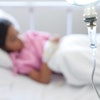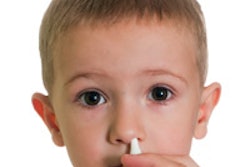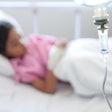
The successful sedation of a child patient with sevoflurane may be viewed differently by concerned patients when their son or daughter experiences emergence delirium and agitation (EAD).
However, an article in the latest Anesthesia Progress outlines a clinical technique that can help reduce the occurrence of EAD and increase a dentist's ability to keep young patients safe and their parents calm (Summer 2013, Vol. 60:2, pp. 67-71).
"Using the Bispectral Index System (BIS)-guided propofol washout technique in the final 30 minutes seems to offer an effective technique for significant reduction of EAD without compromising extubation and recovery times," wrote the article's author, Zakaria Messieha, DDS, a clinical professor at the University of Illinois at Chicago.
In some 300 cases in which he has utilized the technique, it was effective 90% of the time, he noted.
Any dentist administering anesthetic agents has likely encountered EAD; the rate of postsevoflurane EAD incidences was placed at 58% in one study (Journal of Clinical Anesthesia, August 2000, Vol. 12:5 pp. 397-401). The likelihood of EAD is higher in toddlers and preschoolers than in older children; among 63 children of preschool age (3-5 years old), 40% of the sevoflurane group developed EAD, and among 53 children of school age (6-10 years old), 12% of the sevoflurane group developed EAD, according to Dr. Messieha.
Pros and cons
A variety of drugs have been tested to see if they can prevent the effects of EAD, and Dr. Messieha's article covers several of them, addressing their effectiveness.
For example, midazolam can reduce mild EAD when a single 0.1 mg/kg intravenous dose is administered near the close of a procedure, but it has no effect on severe cases (Der Anaesthesist, June 2001, Vol. 50:6, pp. 401-405). In another study in which 0.5 mg/kg or 1 mg/kg intrarectal doses were administered to children, severe EAD incidences occurred in 42% of the first group and 36% of the second group, respectively (Paediatric Anaesthesia, April 2007, Vol. 17:4, pp. 347-352).
A 0.25 mg/kg intravenous bolus of ketamine administered to 85 children between the ages of 4 and 7 in an ambulatory dental rehabilitation center performed better (Paediatric Anaesthesia, September 2007, Vol. 17:9, pp. 846-850). The experimental group had a 17% incidence of EAD, compared with 34% of a placebo group. Its hallucinogenic and seizure-lowering threshold effects are drawbacks, however, and 17% "still represents a high incidence of EAD," the author noted.
Another study found that alfentanil provided a significantly lower incidence of EAD, but it too has drawbacks (Acta Anaesthesiologica Scandinavica, May 2009, Vol. 53:5, pp. 678-681). "Many anesthesiologists prefer to provide narcotic-free anesthesia care in the office-based ambulatory setting to avoid increased recover time, nausea, vomiting, and possible respiratory depression in small children," Dr. Messieha explained.
Propofol also produced a significantly lower percentage of EAD in one study in which a 20% incidence in the experimental group was much lower than the 47% in the placebo group (Anesthesiology, November 2007, Vol. 107:5, pp. 733-738). But the former number is still somewhat high and it increased recovery times.
Dr. Messieha was unimpressed with the performance of physostigmine in a different study he examined, but he also noted issues with its design (European Journal Anaesthesiology, January 2008, Vol. 25:1, pp. 37-42). Acupuncture, however, "could be useful in reducing EAD in children," he wrote. "Pain and agitation scores were lower in the acupuncture group compared to those in the control group at the time of arrival in the postanesthesia care unit and during the subsequent 30 minutes (Paediatric Anaesthesia, November 2009, Vol. 19:11, pp. 1096-1101)." But such treatment requires an acupuncturist.
A relatively new drug, dexmedetomidine, "demonstrated the most remarkable desirable EAD prevention effect" compared with the ones previously mentioned. In one study, 47% of the placebo group experienced EAD, while 5% of the children ages 18 months to 10 years in the dexmedetomidine group did (Paediatric Anaesthesia, July 2006, Vol. 16:7, pp. 748-753). But high cost is a factor, since the drug, brand name Precedex, is still under patent.
BIS monitoring
Dr. Messieha outlined the advantages of using a procedure that employs the BIS monitoring modality. In two studies led by Dr. Messieha (Pediatric Dentistry, May/June 2004, Vol. 26:3, pp. 256-260; Pediatric Dentistry, November/December 2005, Vol. 27:6, pp. 500-504), the author "reported the reduction of extubation, recovery, and discharge times when anesthesia is titrated based on the BIS number," he wrote. "Thus, the use of BIS is likely to be of value when combining propofol with sevoflurane."
In another study, propofol appeared to "offer protection" from the complication of laryngospasm since it occurred with greater frequency when compared with a sevoflurane anesthesia group (Anesthesiology, December 2005, Vol. 103:6, pp. 1142-1148). These findings are the basis for his recommendation of a technique in which sevoflurane administration is ceased during the last 30 minutes of the procedure. The anesthetic state is maintained by the anesthesiologist "with a propofol infusion using an infusion pump guided by the BIS number, as well as by the usual standard patient vital signs," Dr. Messieha explained. Toward the end of the procedure, the anesthesiologist reduces the depth of propofol anesthesia to enable a quick extubation and recovery.
"Postoperative analgesia with intravenous ketrolac, 0.5-0.7 mg/kg, is administered at the same time the propofol is initiated, and the intravenous antiemetic ondansetron 0.15 mg/kg is also administered," he wrote.
The extubation, which can be done with a low risk of laryngospasm, should be initiated while the BIS value is in the high 60s to low 70s range. The anesthetic effect will still be strong enough to prevent agitation or combativeness. The effects of propofol will wane within 15 to 20 minutes.
"While the young patients might still cry, they are usually lucid and responsive and able to articulate their desire to go home or to drink water," Dr. Messieha stated. This, of course, is a substantially better situation than a delirious or inconsolable child in the midst of EAD.



















